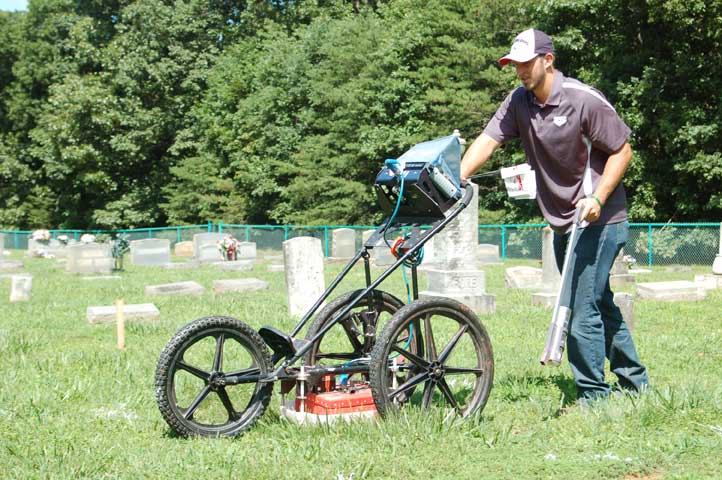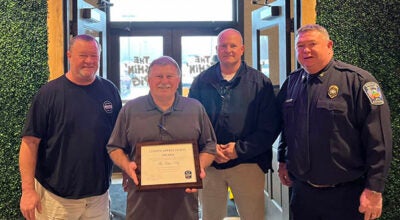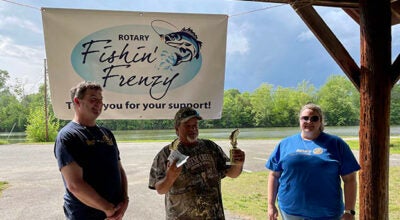Cemetery’s Past Unearthed
Published 5:04 pm Thursday, July 23, 2015
PROSPECT — From locating underground power lines to searching for unmarked graves — it’s all in a day’s work for GPRS. While the “G” does not stand for ghostbusters, Ground Penetrating Radar Systems, Inc. (GPRS), primarily an industrial sub-surface detection service, has been answering an increasing number of calls from cemeteries. GPRS technicians were called to Olive Branch Cemetery in Prospect recently to examine an unmarked portion of the 200-year-old cemetery.
The section in question is at the entrance to the cemetery located directly in front of Olive Branch Church, established in 1814.
“I was told that at one time someone took the headstones and things from some of the graves,” Bobby Showalter, chair of the cemetery association committee, said.
A 50 by 20-foot plot, covered by grass and unmarked, sits just inside the cemetery’s front gate. Showalter thought it a good possibility that the founders of Olive Branch and the Prospect community might be buried there.
At the suggestion of Longwood University Professor of Anthropology Dr. James Jordan, the committee decided to look into GPR. They specialize in providing ground penetrating radar services to both commercial and residential clients.
“Most of our work is underground,” GPRS Market Director Bryan Vickers said. “As far as our company goes, across the United States I would say there is a cemetery call once a week.”
Most of that work involves finding unmarked graves.
“It happens more often that you would think,” Vickers said. “There’s instances where the markers are gone or a cemetery site is just not taken care of — stones may have fallen over or someone just didn’t keep track.”
Ground penetrating radar operates by transmitting pulses of ultra high frequency radio waves down into the ground through a transducer (also called an antenna). The transmitted energy is reflected from various buried objects or distinct contacts between different earth materials.
Vickers compared GPR to the radiation released by cell phones.
“GPR actually releases less than ten percent of the energy of a cell phone,” he said.
In scanning a site, GPRS uses a device that looks like a lawn mower. A digital screen on the device receives GPR images and interprets them.
This modern technology can detect features to help identify a grave, including coffins or vaults, disturbed ground structure and excavation features, and movement or voids caused by collapse of the coffin.
Movement, in this case, does not refer to ghostly activity.
“Personally, I’ve never encountered a ghost, but our company has been included in a ‘Ghost Hunters’ episode filmed in Maryland,” Vickers said. “That client was looking for an ancestor that had passed away back during the Civil War. We did find the actual grave. I don’t know what the results were or if that guy stopped haunting the house.”
GPRS has also been featured in episodes of “CSI New York,” Brad Metzger’s “Decoded” on the History Channel, and “Ancient Aliens.”
“In that show they were looking for time warp tunnels,” Vickers said.
Vickers cited a tunnel he discovered on the job that might have qualified.
“We got a call from DC for a normal environmental job to find an underground storage tank,” he said. “We found an area that looked like a big tank, but what they unearthed was an actual tunnel with artifacts buried in it. We had to go back and look for another tank.”
Locating unmarked graves, Vickers explained, extends beyond a traditional cemetery setting.
“There was a case in Virginia Beach where they were going to straighten a road,” he said. “The road cut through this lady’s yard.”
When GPRS was called to examine the proposed road site they found 38 graves in the homeowner’s front yard.
“The city then had to put a halt to the project,” Vickers said.
There are, Vickers said, a number of regulations in place regarding unmarked graves and human remains.
Virginia law states: “Disinterring (removing from a grave) or displacing part or all of any buried human remains is a Class 4 felony. Conviction is punishable by two to ten years in prison and up to $100,000 in fines. This law applies to all human burials, whether prehistoric, historic, or modern.”
In the course of the company’s cemetery work, Vickers added, some clients receive some information they really don’t want to know.
“One cemetery I was working at, I forgot to turn the machine off,” Vickers said. “When I crossed the street I found more graves under the road.”
The work at Olive Branch Cemetery, however, turned out much as expected: approximately 30 graves were located in the unmarked area.
“It was interesting that some remains were buried at three feet and others are as much as six feet underground,” Showalter said.
The cemetery committee chairman, whose parents and grandparents are buried at Olive Branch, would very much like to find the names of those buried in the unmarked graves and welcomes community input.
“I wish there was some way we could determine who they are,” he said.
Cemetery association members are continuing to discuss how to recognize and document the location and set it apart from the rest of the cemetery. One committee member suggested a single permanent marker in the center stating “location of ancestral souls known now only to God.”
The unmarked graves of Olive Branch Cemetery may remain a mystery, but as Vickers explained, it’s important to document their presence.
“In a way it’s eerie to find things not marked,” the GPRS technician said. “But in a way you feel like you’ve done something good — because now they’re found.






